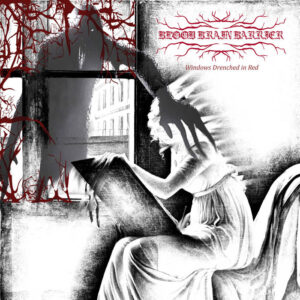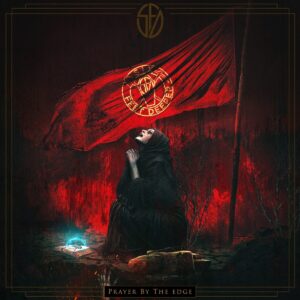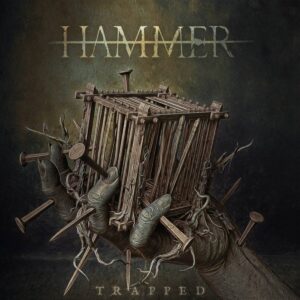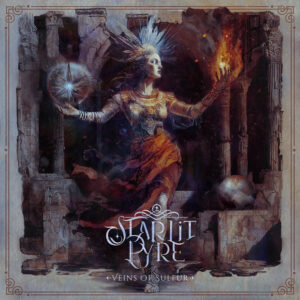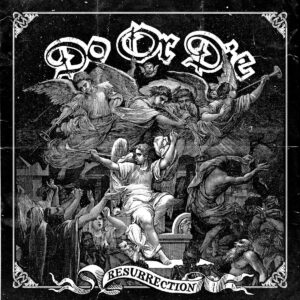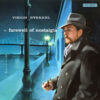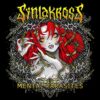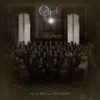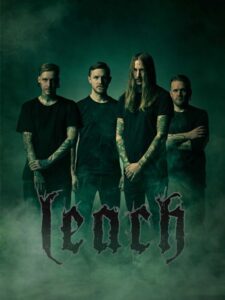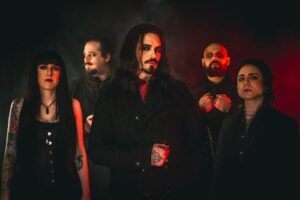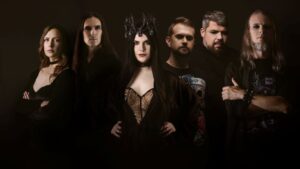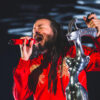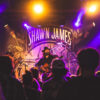Lokabrenna
Nawaharjan
•
March 6, 2020
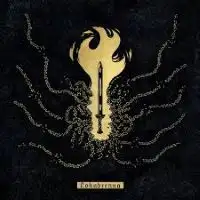
There is a cold desert in the valley of the hill I have climbed. The sun has not set itself in the morning sky, but I can see the hues of oranges somewhere on the snow-capped mountains. I forgot a jacket, but there is no need, for the frostbitten fingertips have warmed me better than I could have asked. There are no sounds, and life remains as still as the rising sun. NAWAHARJAN's "Lokabrenna" (2020) is their most recent album in almost ten years. The black metal project originates from Germany, building their work from Proto-Germanic influence. According to the Metal Archives, "Nawaz" means corpse, and "Harjan" means army, and all of their songs from the album are thought to be written in some form of the Proto-Germanic format, as there are few records of what the actual language looked like.
The language has been reconstructed, but there obviously could remain some errors. The Proto-Germanic language is different from the modern German of today. It is the ancestor of most all Germanic languages and was spoken in most Scandinavian countries. It was created around the 1st century CE, and so, is a very old language and precursor to a lot of extinct, as well as modern languages of today. What NAWAHARJAN has made is unprecedented, and quite unique. Not only are they creating raw black metal, but they are also drawing attention towards a culture or lifestyle that had existed so long ago. What they have done is not only difficult musically, but difficult intellectually, and for that I give my utmost respect.
The album takes the listener on a journey into a world that has been lost. Starting the album with "Warassuz," it is quite powerful as it begins without any build up to lead one down the path. What is really evident is the semi-clean vocals, a Primordial or almost Behemoth styled vocal structure that is heathenistic. The strong bass is brought out again in "Maino." The project stretches the boundaries between a more melodic style and pure black metal. In "Skuwwe," the technique of the album became the most apparent. Very similar to Icelandic black metal, there was more of an atmospheric harshness to the sounds of the design. The notes change quite frequently, and there are abrupt shifts that brought me on another skyline of activity. As I climbed through the mountainous valley, I realized the sun was highest in the sky.
I had wondered how long I had been in the desert. As the pitch of the music adjusted to higher frequencies, I felt I was off the mountain and in some frostbite oasis. I began to process the world a bit more clearly, and through the droning of the double kick, my feet were grounded on the clouds above me. I understood, halfway through "Ütfurskö," that the way I would describe the vocals and the patterns of each song would be ritualistic or a cult-like. This is not a negative connotation in the least, it is a format that really brought me to the assumed goal of the project: to bring the listener back through the ages, and represent the cruelty of the times to the beauty of the pieces. The snare drum-an exquisite, ancestral, reoccurring theme-made the scene exactly how it should have been in my mind. Similarly, "Sunjo" was also an ancestral creation that emphasized a low bass and ritualistic vocals. The melody in the first half of the song stuck with me the most, along with the tune through "Utfursko." "Thwerhanassuz" brought back the snare drums and heathen vocals that was faster paced. I found myself racing down the hill, the snow melting off my back. I was racing against the sun.
There was a small village that I thought was not an oasis. I needed to get there. "Umbibrauntiniz" was unlike the previous songs in the sense that near the three minute mark, there was a brief pause that implemented a raven-like sound-whether that was an actual raven or vocals that sounded like a raven, I could not tell. Nevertheless, the image of a raven was placed into my mind, bringing an even darker sense to the piece than I had already imagined. Black colored creatures always have a strange folklore. Óthin, the heathen all-father, had two crows on his shoulder that would translate the words of the world to him. Since this is a Proto-Germanic project, Nordic mythology became the most prominent image during this particular song. After much confusion of meeting the raven in the cold desert, I was thrown back into the sprint I was in before through the next song called "Thrawo." I became lost in my surroundings. This particular piece was more melodic, reminding me of more atmospheric projects that have elements of folk music.
I had initially reached the village, and realized I had been dreaming all along. "Hradjungo" threw me forward and pressed me face against the mountainous desert. The solo-sounding element was wonderfully angelic. The album ended on the strongest theme that was kept throughout the piece, that is, of its ritualistic enthusiasm. Although the ending riff could have been much more prominent, I was satisfied as I faded out into quiet. I had only wished the album was introduced in a similar manner. "Lokabrenna" is one of a kind. It is a rare piece that takes the listener through an unforgettable journey that occurred decades ago in a land that is foreign to most. Through rituals, and perhaps, pagan rhetoric of sounds, the project does not fail to give an accurate representation of past reality, and never straying too far from the overall goal and concept of the piece.
9 / 10
Almost Perfect
Songwriting
Musicianship
Memorability
Production

"Lokabrenna" Track-listing:
1. Warassuz
2. Maino
3. Skuwwe
4. Ūtfurskō
5. Sunjo
6. Thwerhanassuz
7. Umbibrautiniz
8. Thrawo
9. Hradjungo
Nawaharjan Lineup:
Wodanaridan - Bass
Nawabrandaz - Drums
Skadulikam - Guitars
Skandaz - Vocals, Guitars
More results...
